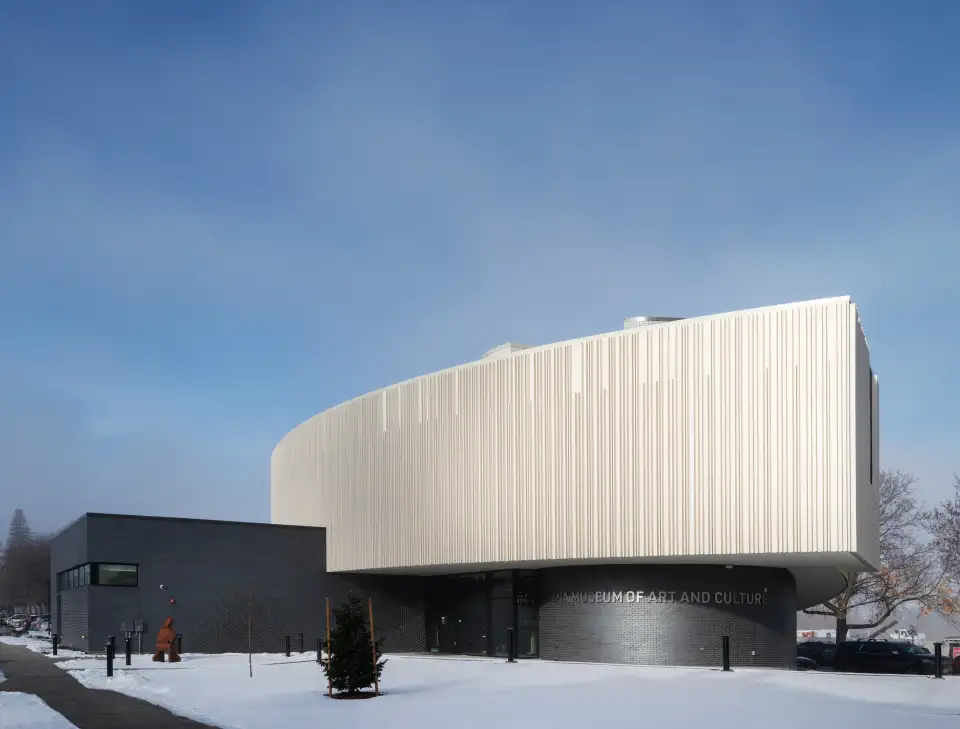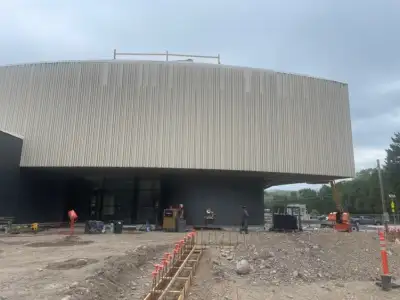The Montana Museum of Art and Culture (MMAC), founded in 1894, recently overcame significant challenges by constructing a $15 million facility that is built to meet LEED standards, marking a historic milestone for the University of Montana. Previously lacking a permanent home, the MMAC's extensive collection of 12,000 artworks was dispersed across campus, limiting public access and compromising the safety of the pieces. Through a successful fundraising campaign and support from donors like Patt and Terry Payne, the new facility boasts 17,000 square feet, including galleries, a library, and advanced technology for preserving and displaying art. The sustainable design, featuring Longboard's HITCH™ system, highlights the museum's commitment to environmental responsibility. This development not only elevates the MMAC's academic and artistic reputation but also serves as a cultural resource for the community and the state. The museum's journey reflects resilience, vision, and generosity, illustrating how overcoming obstacles can lead to a lasting and positive impact on education, heritage preservation, and societal enrichment.

Longboard Architectural Products Collaborates with New Montana Museum
About the Museum
The Montana Museum of Art and Culture (MMAC) is a public art museum located on the University of Montana campus in Missoula, Montana. It was founded in 1894 and has a collection of nearly 12,000 works of art, making it the oldest, largest, and most comprehensive art holding in the state. The MMAC’s mission is to "collect, preserve, research and interpret the visual arts with an emphasis on the Rocky Mountain West for the education, enrichment and enjoyment of all."
Museums play a crucial role in inspiring and teaching communities and society as a whole. They preserve our heritage, create a deeper understanding of other cultures, and serve as repositories of human creativity. These institutions house and exhibit a rich collection of artwork, artifacts, and historical objects that provide a tangible connection to the past. These collections serve as educational resources, offering visitors the opportunity to learn about artistic movements, cultural traditions, and historical events.
Through curated exhibitions and interpretive programs, they contribute to the dissemination of knowledge and the cultivation of critical thinking skills. Moreover, art and culture museums often function as spaces for social interaction, bringing people together to share experiences, exchange ideas, and appreciate the beauty and diversity of human expression. By promoting cultural awareness and appreciation, museums contribute to the development of a more informed and empathetic society that values creativity, heritage, and the interconnectedness of global cultures.
MMAC Was Struggling
For over a century, the MMAC lacked a permanent home for its collection. Most of it was stored in various locations across the campus, such as basements, attics, and closets. This posed several challenges for the museum, such as:
Limited access and visibility for the public, students, and researchers
Poor environmental conditions and security for the artworks
High costs and risks of transporting and handling the artworks
So, in 2014, the MMAC launched a fundraising campaign to build a new facility for the museum. With the help of generous donors, such as Patt and Terry Payne, who contributed $12.5 million to the project, they were able to raise the funds needed. The new facility, which cost $15 million and took seven years to complete, is located next to the Adams Center on the north side of the campus. It comes complete with some beautiful new features:
17,000 square feet of space, including two galleries, a lobby, a classroom, a library, a gift shop, and a storage vault
State-of-the-art technology and equipment for displaying, preserving, and managing the collection
Enhanced accessibility and security for the visitors and the artworks
Increased opportunities for educational and cultural programming and outreach
The new facility opened to the public in September 2023, marking a historic milestone for the MMAC and the University of Montana. The new facility has enabled the museum to:
Showcase a diverse and comprehensive selection of artworks from its collection, including masterpieces by Andy Warhol, Pablo Picasso, Salvador Dalí, Donatello, Peter Voulkos, Rudy and Lela Autio, Ben Steele, Jaune Quick-to-See Smith, Barbara Morgan, Nancy Erickson, and many others
Host special exhibitions, such as “Rising From the Ashes: Selections from the Three Chiefs Cultural Center Collection”, which features objects from the Salish, Kootenai, and Pend d’Oreille people that were salvaged from a fire that destroyed their cultural center in 2020
Attract more visitors, donors, and supporters, both locally and nationally
Enhance the academic and artistic reputation of the University of Montana
Fulfill its mission of serving the community and the state with a valuable cultural resource

Upgrades With Sustainable Products
The new facility has also aimed for LEED certification! Some of the features of the sustainable design include cutting-edge climate control, water-saving fixtures and landscaping, energy-efficient lighting, and recycled and locally sourced materials. One of the building products used on the façade was Longboard’s HITCH™ system. This modular system offers a range of thermally broken and intermittent structural attachment solutions for rain screen cladding systems. MMAC used hitch clips at 3” and 4” lengths to accommodate the different insulation thickness around the building. It has a high structural capacity for heavy cladding loads up to 15psf under high wind load and seismic conditions. This made it easy to accommodate the Longboard smooth plank and Link & Lock™ systems used as the cladding. Using these two systems together created a stunning castellation look that give the building a unique, textured aesthetic.

The design of the building included large radiused walls, with on in particular being a tight radius which created a tight section to clad. HITCH™ and Longboard products can be customized to install effectively and easily in these situations. For the tighter radiused wall on the project, we turned the orientation of the girts to be vertical (parallel to the planks) with a second layer of hat channel to bend with the radius. This was easily done with the nature of HITCH™ accommodating vertical or horizontal girt orientation by simply rotating the thermal cap on each clip. This product is unique in that it is extremely easy and simple to configure and thus work with any design.

The MMAC’s new building is a model of sustainability for the University of Montana and the state of Montana. It demonstrates the museum’s commitment to preserving not only its art collection, but also the natural resources and the environment.
The Montana Museum of Art and Culture is a remarkable example of how a public art museum can overcome the challenges of lacking a permanent home and create a new facility that meets the needs and expectations of its stakeholders. The new facility is not only a beautiful and functional space for the museum, but also a symbol of the dedication, vision, and generosity of the people who made it possible. The new facility is expected to have a positive and lasting impact on the MMAC, the University of Montana, and the state of Montana.